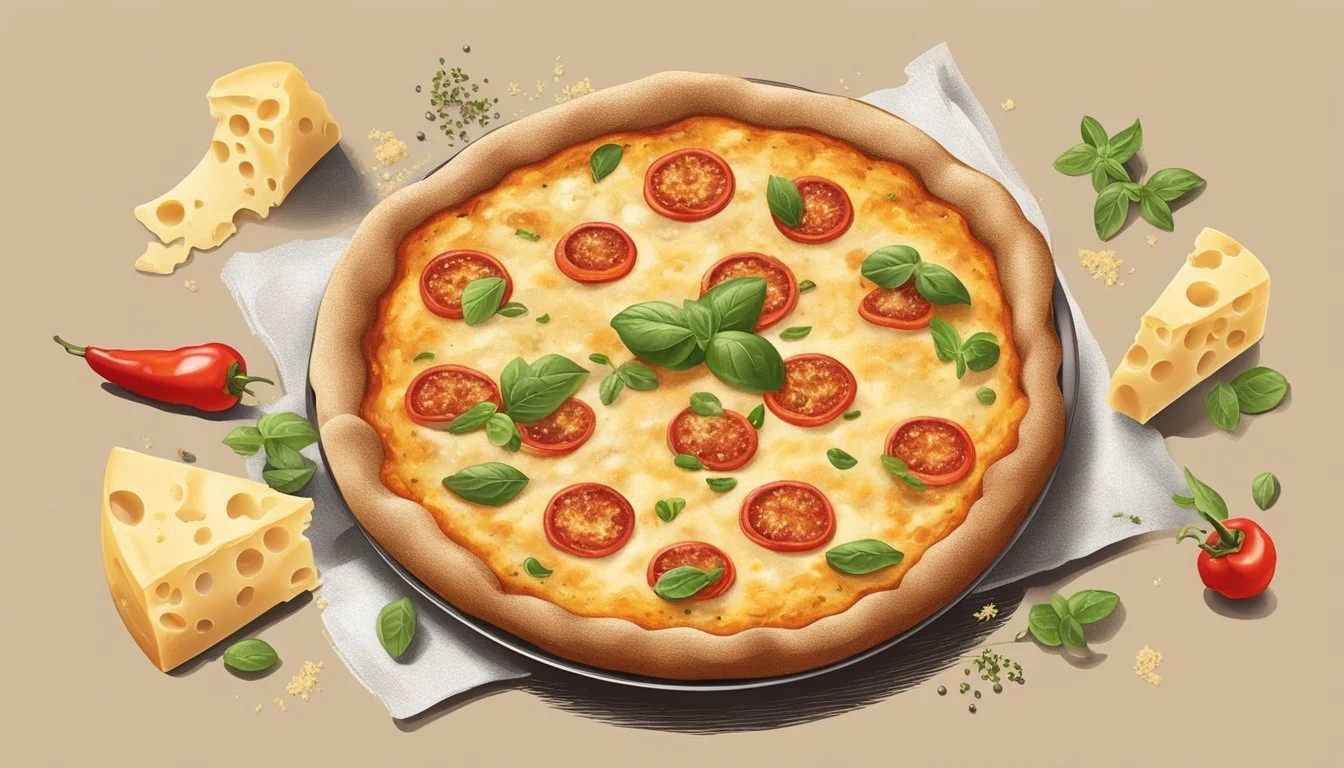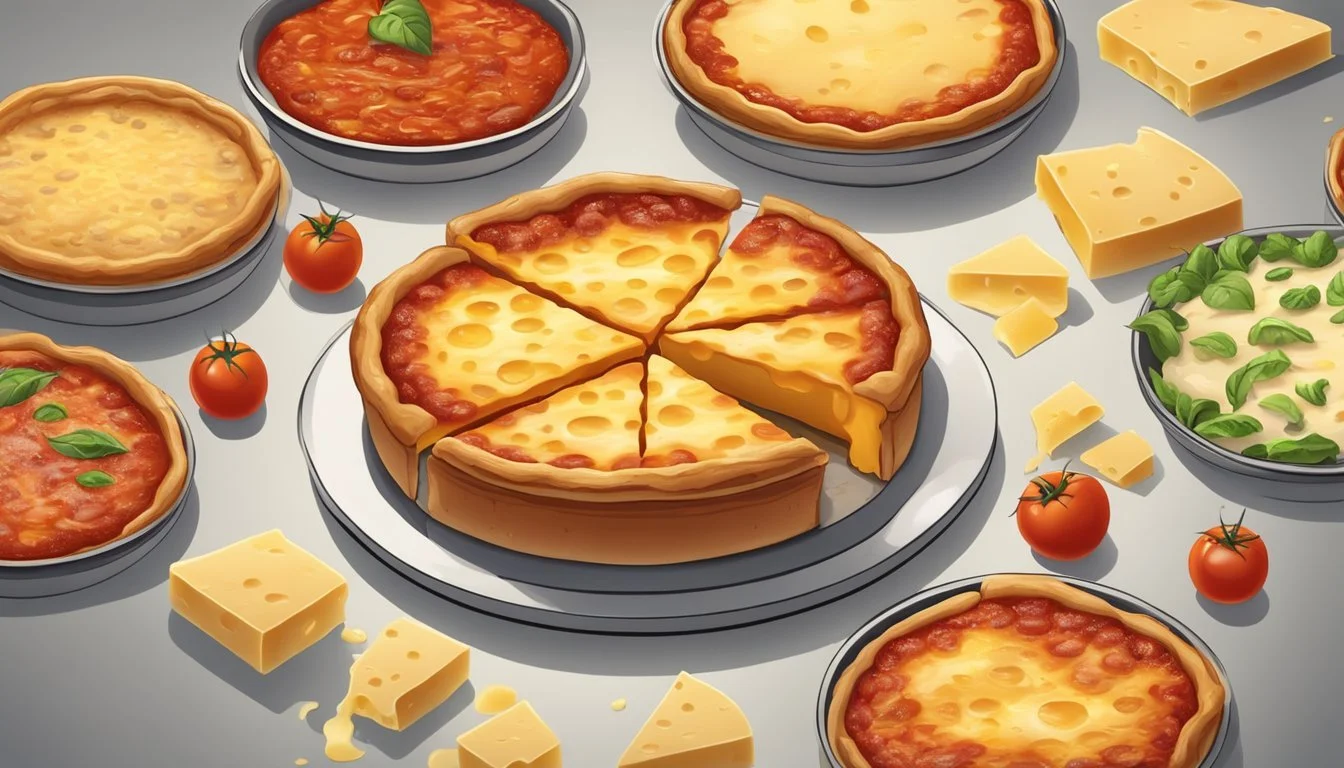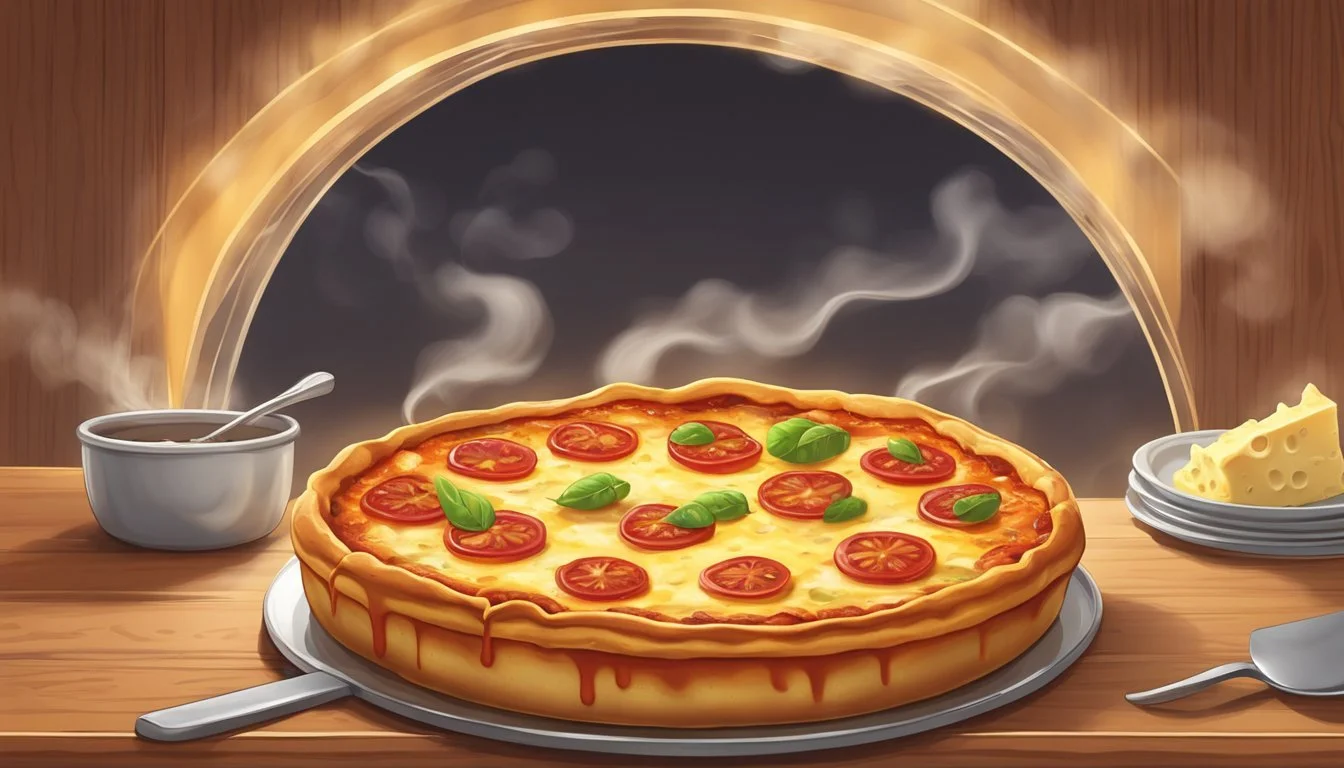How Long Does Deep Dish Cheese Pizza Last?
Storage Tips and Guidelines
Deep dish cheese pizza is a beloved dish that many enjoy both fresh and as leftovers. When it comes to determining how long deep dish cheese pizza lasts, proper storage is key to ensuring it remains safe to eat and retains its quality. Stored in an airtight container and refrigerated, deep dish cheese pizza can last up to 5 days. For those looking to keep their pizza fresh for a longer period, freezing it is an option, preserving it for several months.
Maintaining the quality of your deep dish cheese pizza involves proper handling right from the beginning. After baking, allow the pizza to cool before placing it in the refrigerator or freezer. This helps prevent moisture from accumulating, which can affect the texture and taste. Reheating leftovers correctly, at around 300°F for 15-20 minutes, ensures that the pizza remains delicious and safe.
Deep dish cheese pizza can be just as enjoyable the second time around if stored and reheated properly. Knowing how to store and handle your pizza will keep it tasting great and safe for consumption.
Understanding Deep Dish Pizza
Deep dish pizza boasts a unique structure with a thick crust, ample cheese, and hearty toppings. It's distinct from other pizza styles due to its specific preparation methods and characteristic ingredients.
Characteristics of Deep Dish Pizza
Crust: The crust is a fundamental component, standing approximately two to three inches tall. Its texture is slightly flaky and buttery, often achieved through the use of oil in the baking pan. This results in a slightly fried texture.
Cheese and Toppings: Cheese goes directly onto the crust, creating a melty and dense base. Commonly, mozzarella is used, but variations can include a mix of cheeses. Above the cheese, a variety of meats, vegetables, and other toppings are layered, adding substantial heft to each slice.
Sauce: The tomato-based sauce is typically added as the final layer, covering the cheese and toppings. This method prevents the toppings from burning during the long baking process. Ingredients like crushed tomatoes, garlic, and herbs are common, enhancing the depth of flavor.
Pizza Dough: The dough itself is crucial, often containing additional fats like butter or oil. It’s kneaded meticulously to achieve a glossy, smooth consistency. When pressed against the sides of a deep pan or cast-iron skillet, it holds the pie's substantial ingredients effectively.
Comparing Deep Dish to Thin Crust
Crust Thickness: Thin crust pizzas have a much lighter and crisper crust, usually less than half an inch thick. It serves as a minimal base, highlighting the toppings and cheese.
Cheese and Toppings Distribution: In thin crust pizzas, the cheese and toppings are spread evenly, allowing for a crisper finish as opposed to the deep, more layered approach in deep dish pizzas.
Sauce Application: Thin crust pizzas often have the sauce applied directly to the dough, underneath the cheese and toppings. This contrasts with the deep dish, where the sauce is the topmost layer to protect the other ingredients during baking.
Baking Method: Thin crust pizzas bake quickly at high temperatures, resulting in a crispy texture. Deep dish pizzas require a longer baking time at a lower temperature to ensure the thickness of the crust and density of toppings are cooked thoroughly without burning.
By understanding these key characteristics and comparisons, readers can better appreciate the uniqueness and craft of deep dish pizza, distinguishing it from other pizza varieties.
Storing Deep Dish Pizza
Deep dish cheese pizza can be enjoyed for days if stored properly. Proper storage methods include refrigeration and freezing, which can help maintain its quality and prevent foodborne illnesses.
Optimal Storage Conditions
To keep deep dish pizza fresh, store leftovers in an airtight container. This helps prevent moisture loss and bacterial growth. Wrap each slice in plastic wrap or aluminum foil before placing it in the container to further protect it. The container should be stored in the coldest part of the fridge, typically the back, to maintain a consistent temperature.
Refrigeration Guidelines
Refrigerate deep dish cheese pizza within two hours of it being cooked or served. It can safely last 3-4 days in the fridge. After this period, the risk of bacterial growth increases significantly, which can lead to foodborne illness. Make sure to reheat the pizza to an internal temperature of 165°F before consuming to ensure any potential bacteria are killed.
Freezing and Thawing Instructions
For longer storage, freeze the deep dish cheese pizza. Wrap each slice tightly in plastic wrap and then in aluminum foil to prevent freezer burn. Place the wrapped slices in a resealable plastic bag or an airtight container before placing them in the freezer. This can keep the pizza good for up to 1-2 months.
To thaw, transfer the slices from the freezer to the fridge and let them thaw overnight. Reheat in an oven at 350°F for 10-15 minutes or until heated thoroughly to ensure food safety and revive the original taste and texture.
Shelf Life of Stored Pizza
Storing deep dish cheese pizza properly can extend its lifespan significantly. Key factors include refrigeration, freezing, and recognizing signs of spoilage.
Refrigerated Pizza Lifespan
Refrigerated deep dish cheese pizza typically lasts between 3 to 5 days. This timeline ensures the pizza remains safe to eat and retains its quality.
To maximize freshness, store it in airtight containers or tightly wrapped in plastic wrap. This method prevents moisture loss and contamination. Refrigerated leftover pizza can be reheated in an oven at 375°F (190°C) for about 10 minutes to regain its flavor and texture.
Frozen Pizza Lifespan
Freezing extends the lifespan of deep dish cheese pizza to around 1 to 2 months. Proper packaging is crucial to avoid freezer burn, which can affect the taste and texture.
Wrap the pizza slices individually in aluminum foil or freezer wrap, then place them in airtight freezer bags or containers. Freezing deep dish pizza immediately after it cools from baking preserves its quality better.
Signs of Spoilage
Recognizing spoilage signs is important to prevent foodborne illness. Discoloration or unusual odors indicate the pizza has gone bad. Visible mold growth is another clear sign.
If the texture becomes overly dry or brittle, it suggests improper storage or extended refrigeration. Always inspect leftover pizza before consuming, especially if it has been stored for longer than the recommended period.
Reheating Stored Pizza
Reheating deep dish cheese pizza can be done in various ways, each method impacting the texture and taste of the pizza differently. Selecting the best method depends on the tools available and the desired outcome.
Reheating in an Oven
An oven is an excellent option for reheating deep-dish pizza to maintain its taste and texture. To start, preheat the oven to 350°F (175°C). Cover a baking sheet with aluminum foil and lightly grease it to prevent sticking. Place pizza slices on the sheet, ensuring some space between each slice. Spray a bit of water on the slices to keep them moist. Loosely cover the pizza with another piece of aluminum foil. Bake for about 15-20 minutes or until the pizza reaches the desired temperature.
Using a Skillet
Using a skillet is a quick way to reheat pizza while retaining a crispy crust. Opt for a cast iron skillet or a nonstick skillet. Heat the skillet on medium-low heat. Place the pizza slice in the skillet and cover it with a lid or foil to trap the heat, which helps melt the cheese without overcooking the crust. Cook for 5-7 minutes, or until the cheese is melted and the bottom is crispy. Check occasionally to prevent burning.
Microwave Reheating Tips
Reheating pizza in a microwave is the fastest method but can make the crust soggy if not done correctly. Place the pizza slice on a microwave-safe plate. Set a cup of water next to the plate inside the microwave; this helps prevent the crust from becoming too chewy. Microwave on high for 30-60 seconds. Check the pizza and continue heating in short intervals if needed. Be careful not to overheat, as this can make the pizza tough and rubbery.
Alternative Reheating Methods
Other methods, such as using an air fryer or a broiler, offer unique benefits. For the air fryer, preheat to 325°F (163°C). Place the pizza in the air fryer basket and cook for 6-7 minutes. This method ensures a crispy crust without making the cheese too tough. For broiling, set the oven to broil mode. Place the pizza on a baking sheet and broil for 2-3 minutes, monitoring closely to prevent burning. This method can quickly refresh the toppings and melt the cheese without drying out the crust.
Utilizing these methods ensures that reheated pizza is enjoyable and closely resembles its freshly-baked state.
Maximizing Pizza Enjoyment
Maximizing the enjoyment of leftover deep dish cheese pizza involves enhancing its flavor and following best practices for storing and reheating.
Enhancing Leftover Pizza Flavor
To bring out the best flavors in leftover pizza, consider adding fresh ingredients before reheating. A drizzle of olive oil can rehydrate the crust and keep it from becoming too dry. Fresh basil or oregano adds a fragrant, herbal note.
Sprinkling parmesan cheese can elevate the taste with its salty, nutty flavor. Additionally, topping the pizza with fresh veggies like tomatoes, bell peppers, or arugula after reheating can provide a crisp contrast to the melted mozzarella.
Finally, reheating in an oven at 375°F to 400°F helps maintain the integrity of the crust and evenly warms the cheese.
Best Practices for Leftover Pizza
Proper storage is essential to maintain the quality of leftover pizza. Use an airtight container or wrap the pizza tightly in plastic wrap to retain moisture. Refrigerate the pizza promptly, ideally within two hours of it being cooked.
To avoid sogginess, store slices in a single layer. Refrigerated pizza typically lasts 3 to 4 days. When reheating, place the pizza directly on the oven rack or preheated pizza stone to achieve a crispy crust. If using a microwave, place a cup of water inside to keep the cheese from becoming rubbery.
By following these best practices, the pizza remains enjoyable and retains its quality for several days.







